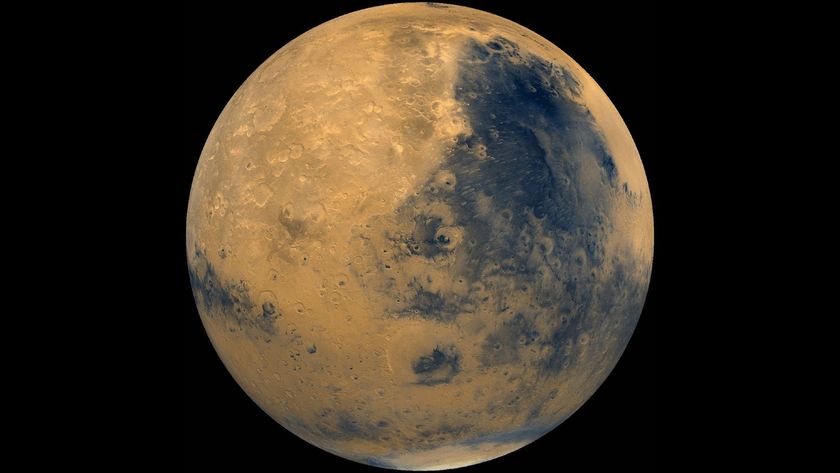Photos: Germany's ROSAT Satellite Falling to Earth
ROSAT Satellite in Space

Artist's impression of the ROSAT satellite in space.
German ROSAT Satellite Tracked Before Fall to Earth
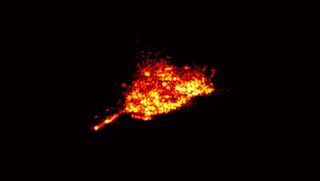
A few days before re-entering Earth's atmosphere, the German X-ray research satellite ROSAT was targeted by the Tracking and Imaging RAdar (TIRA) at the Fraunhofer Institute for High Frequency Physics and Radar Techniques in Wachtberg, near Bonn. TIRA is part of a global network of monitoring stations that collected data about ROSAT. From this data, the orbit was determined and images were produced. This example, acquired on October 20, 2011, clearly shows the antenna mast of the satellite.
ROSAT Re-entry Animation

This still from an animation by Analytical Graphics, Inc., depicts the re-entry of Germany's defunct ROSAT satellite in October 2011.
ROSAT Photographed by Marco Langbroek of the Netherlands
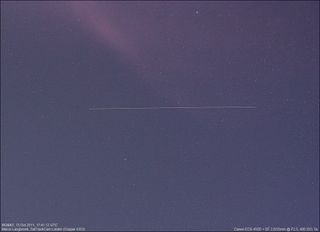
On Oct. 14, 2011, astrophotographer Marco Langbroek of the Netherlands caught this view of the German satellite ROSAT, which is expected to fall to Earth in October 2011. He said: "I just observed the satellite again, in even deeper twilight. It is moving very fast, quite a spectacular view."
ROSAT Images the Entire Sky in X-rays
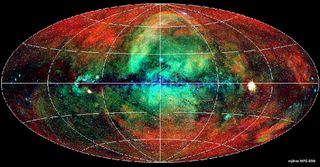
This image, obtained with ROSAT during its all-sky survey in 1990 and 1991, shows the entire sky in X-rays. In this image, our Milky Way lies at the level of the equator, where supernovae remnants (for example in the Vela constellation on the right half of the image) and X-ray binaries can be seen. The various colours indicate the different energy strengths of the X-ray radiation.
ROSAT Satellite Photographed by Ralf Vandebergh (Annotated)
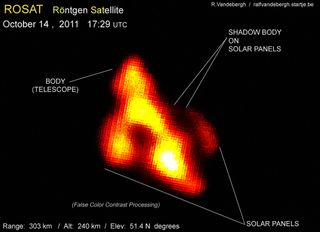
This exclusive image was made by Ralf Vandebergh, who said: "It is false-color to increase certain visible contrasts. A very special detail visible is the shadow of the body (the telescope) on the solar panels! You can see the angle with the sun and the observer (me) as ROSAT passed not overhead but [at] 51.4 degrees northern latitude. This is a very difficult observation as the object is very small."
ROSAT Satellite Photographed by Ralf Vandebergh
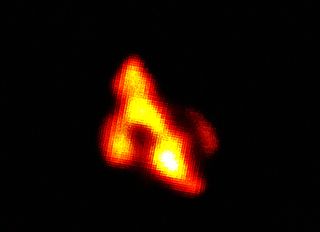
This exclusive image was made by Ralf Vandebergh for SPACE.com, who said: "It is false-color to increase certain visible contrasts. A very special detail visible is the shadow of the body (the telescope) on the solar panels! You can see the angle with the sun and the observer (me) as ROSAT passed not overhead but [at] 51.4 degrees northern latitude. This is a very difficult observation as the object is very small."
Get the Space.com Newsletter
Breaking space news, the latest updates on rocket launches, skywatching events and more!
Sample Representation Based on Three Consecutive Orbits of ROSAT
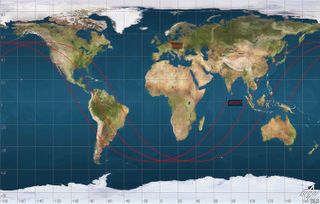
A sample representation based on three consecutive orbits of ROSAT around the Earth. Each of these orbits has a duration of about 90 minutes. The path of one orbit to another gradually changes above Earth's surface. This image shows ROSAT on April 12, 2011.
ROSAT Undergoing Tests in The Space Simulation Chamber

The ROSAT satellite undergoing tests in the space simulation chamber at Dornier.
The ROSAT Mirror System
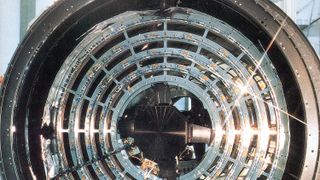
The ROSAT system of mirrors comprises four nesting Wolter mirrors with a focal length of 2.4 meters. Each of the ring-shaped mirrors measures 50 centimeters in length, and the largest has a diameter of 84 centimeters. The mirrors, manufactured by Carl Zeiss, possess the smoothest mirror surfaces ever produced. This photograph depicts the mirror system from the 'viewpoint' of inbound X-ray radiation.
ROSAT Launch, June 1, 1990
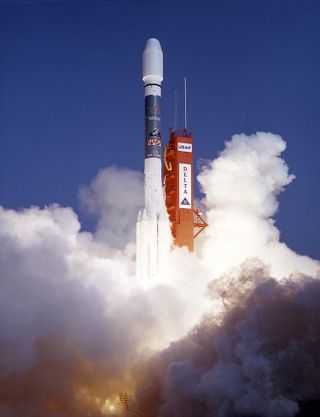
This X-ray satellite was launched from Cape Canaveral in Florida on June 1, 1990, on a Delta II rocket, property of NASA. Originally, the plan was to put Rosat into Earth orbit using a US space shuttle. Following the explosion of Challenger in 1986 (when ROSAT was under construction), it was decided to launch the X-ray satellite into orbit on a rocket.
Join our Space Forums to keep talking space on the latest missions, night sky and more! And if you have a news tip, correction or comment, let us know at: community@space.com.

Space.com is the premier source of space exploration, innovation and astronomy news, chronicling (and celebrating) humanity's ongoing expansion across the final frontier. Originally founded in 1999, Space.com is, and always has been, the passion of writers and editors who are space fans and also trained journalists. Our current news team consists of Editor-in-Chief Tariq Malik; Editor Hanneke Weitering, Senior Space Writer Mike Wall; Senior Writer Meghan Bartels; Senior Writer Chelsea Gohd, Senior Writer Tereza Pultarova and Staff Writer Alexander Cox, focusing on e-commerce. Senior Producer Steve Spaleta oversees our space videos, with Diana Whitcroft as our Social Media Editor.


